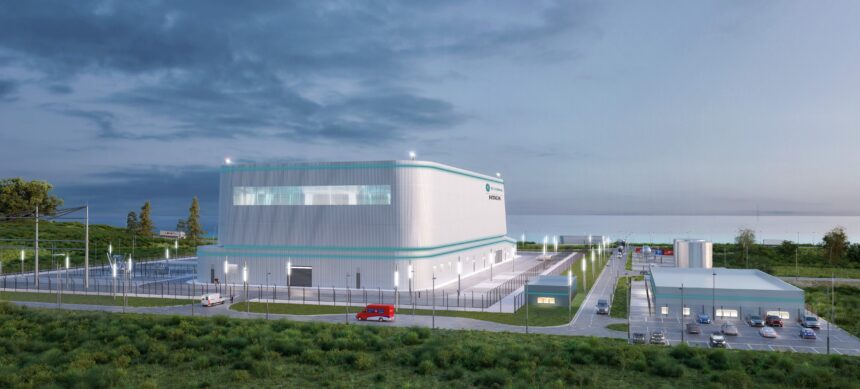In a groundbreaking announcement that signals a dramatic shift in Ontario’s energy landscape, Premier Doug Ford unveiled plans yesterday for the world’s first Small Modular Reactor (SMR) server centre as part of a sweeping $20 billion nuclear expansion initiative. The landmark facility, to be constructed in Darlington, represents a bold fusion of nuclear energy and data centre technology that could potentially reshape both Canada’s energy sector and its digital infrastructure capabilities.
“We’re not just building power plants—we’re creating the energy backbone for Ontario’s digital future,” Ford declared at the announcement ceremony, flanked by energy executives and municipal leaders. “This investment positions our province at the cutting edge of both clean energy and digital innovation.”
The ambitious project features a novel integration of SMR technology with high-density computing infrastructure, effectively creating a self-powered data processing hub that promises near-zero carbon emissions. According to provincial documents released with the announcement, the facility will house 12 NuScale SMR units, collectively generating 924 megawatts of power while supporting over 200,000 servers.
Energy analysts note that this represents a significant departure from traditional power distribution models. “What we’re seeing is essentially power generation at the point of consumption,” explains Dr. Leanne McKinnon, nuclear policy researcher at the University of Toronto. “By eliminating transmission losses and directly coupling production with high-demand computing, they’re achieving efficiency rates that would be impossible with conventional grid systems.”
The provincial government projects the initiative will create approximately 7,500 construction jobs and 1,200 permanent positions once operational. Economic impact assessments suggest the facility could contribute $1.8 billion annually to Ontario’s GDP when running at full capacity.
Environmental groups have offered mixed reactions. The Canadian Climate Coalition praised the zero-emission aspects of the project but expressed concerns about nuclear waste management. “While we acknowledge the carbon benefits, we need absolute clarity on the long-term storage solutions for spent fuel,” said Danielle Laroche, the coalition’s executive director.
The project represents just one component of Ford’s larger nuclear strategy, which includes refurbishing existing reactors at Bruce Power and potentially adding new units at existing nuclear sites. The comprehensive plan aims to increase Ontario’s nuclear capacity by approximately 40% over the next two decades, addressing projected energy demands from population growth and industrial expansion.
Critics, including opposition energy critic Sara Patel, question the economic viability of such massive investments. “The government is committing unprecedented public funds to nuclear while renewable alternatives continue to decrease in cost,” Patel stated in response to the announcement. “Ontarians deserve a transparent cost-benefit analysis comparing all available options.”
Industry insiders from the technology sector have responded enthusiastically to the server centre concept. “This could position Canada as a leader in sustainable data processing,” noted Vincent Chang, CEO of TechNorth Solutions. “With data demands growing exponentially, having carbon-neutral processing capacity becomes increasingly valuable in the global market.”
Construction is slated to begin in early 2026, with the first phase expected to come online by 2029. The full facility completion date is projected for 2032, though energy analysts caution that nuclear projects historically face significant timeline challenges.
As global energy markets continue evolving and digital infrastructure demands accelerate, Ontario’s SMR server centre experiment will be closely watched by jurisdictions worldwide. The question remains: will this bold merger of nuclear power and digital infrastructure prove to be a visionary step toward a sustainable future, or will the technical and financial challenges of such unprecedented integration prove too formidable even for this ambitious plan?


















